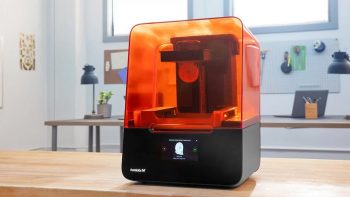3D Printing Is Not A New Technology
Traditional production methods pose many problems for dental labs. High-quality dental appliances such as aligners, retainers, and bridgework require skilled labor and labor. These devices are labor-intensive and expensive to produce. This increases costs for patients as well as the manufacturing time, which delays the implementation of treatment plans. 3D printing is not a new technology. However, significant advances in 3D printing software, 3D printing dental hardware, and dental resins have enabled on-demand production and precise dental appliances. Patients will have a better experience with 3D printing because they can get a better fit and faster turnaround times. They also get higher labor productivity, higher yield, and lower costs. 3d printing for dental labs can be used to create dental products on demand.
What Are The Benefits Of 3D Printing In Dental Labs?
§ Accuracy: 3D printed dental products are either comparable to or more accurate than traditional dental equipment. Many of the manual steps involved in manufacturing dental products are eliminated by advanced 3D printing software, hardware, or materials.
§ Flexibility: 3D printers can directly print multiple dental products. Dental labs can quickly produce a variety of dental appliances using a single process. This includes night guards, retainers, and surgical tools.
§ Speed: 3D printers reduce the time required for manual processes such as grinding, thermoforming, and polishing. Printing products is easy and requires very little post-processing. The process of taking an impression of the patient’s mouth and printing the dental device takes less than a day, in some cases even less than an hour.

§ Higher Throughput: Dental 3D printers today use digital optical processes to produce high-quality dental products at fast printing speeds. Modern 3D printers allow high-throughput batch production for multiple dental products. This is possible thanks to their flexibility and large build area.
Dental labs can print clear aligners instantly and have them delivered to patients in a short time frame thanks to advanced 3D printing materials and processes. The 3D-printed dental appliances fit better and are more comfortable than traditionally manufactured ones.
3D Printing Workflow For Dental Labs
Dental labs can now produce multiple products using digital 3D printing workflows. This allows them to streamline their production process. This workflow can be accelerated in a similar way to the following:
§ The lab is provided with an intraoral scan and notes by the practitioner on the patient’s features.
§ 3D printing software converts your scan into a 3D model, with margin lines, support structure, and the desired printing orientation
§ This product is printed directly with a special dental resin material
§ After washing and trimming the supports, the product can be cured.
§ The lab ships the final product either back to the practitioner, or directly to the patient.
Take Your 3D Printing Workflow To The Next Level
HeyGear has revolutionized the way dental laboratories do business. It creates the most efficient digitalized workflow to produce advanced dental devices. Dental labs are able to benefit from a simplified workflow that lowers costs and provides better outcomes for patients. The 3D printing of dental labs is now more affordable, faster, and more precise than ever. Companies like HeyGear offer printing systems, software, and materials to help labs transform their business models, increase labor productivity, scale up, and grow.
HeyGear uses a variety of digital technologies to create a complete production system that aids our partners in digitizing the workflow. Dental labs can produce flexible, on-demand products in-house or in Smart Factory using cloud-connected 3D printers that are FDA-approved.



